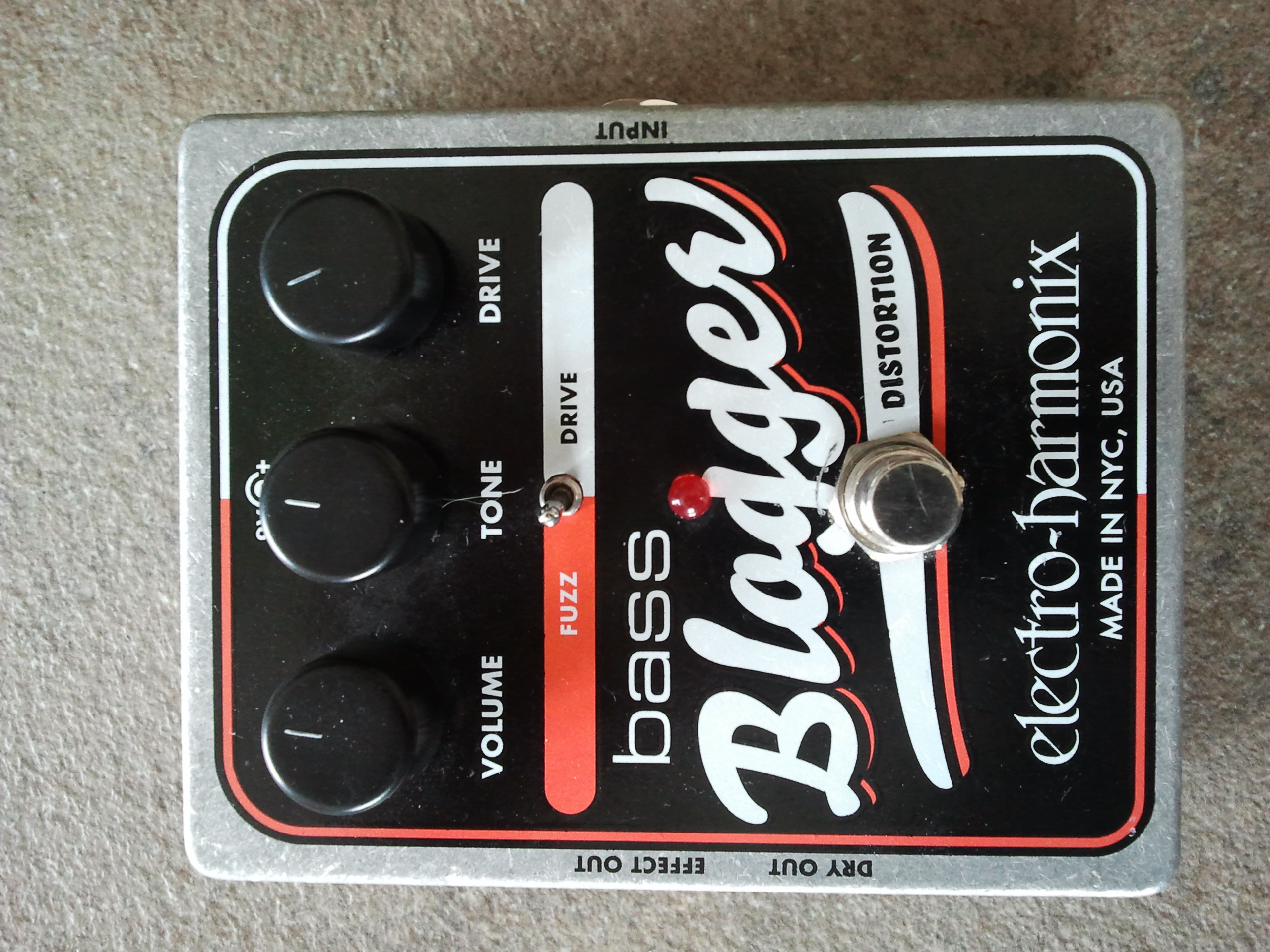

The Micro Synthesizer, while dubbed a reissue, uses the same components as the original units made in the late 70’s, according to Mr. LegendaryTones was fortunate enough to speak to Electro-Harmonix President Mike Mathews about the Micro Synthesizer as well as tone in general. Last but not least, the Micro Synthesizer comes housed in a very cool wooden storage box. Also included is a small pamphlet with sample settings that are a good start for using the Micro Synthesizer. The Micro Synthesizer comes with its own A/C power supply. The adjustments can be made with a very small Phillips screwdriver. In addition, the bottom of the Micro Synthesizer has a control for setting the input volume based on whether single-coil or humbucking pickups are used. The first group of sliders are for the overall "mix" of the voices, from the standard guitar tone, one octave and two octave below sliders, and a square wave slider that provides the distorted "edge." Controls are also present to control the attack time, the frequency center of the sweep range, how far the sweep range goes and how quickly the sweep occurs. Effective use of the slider controls is of course the key to unlocking the myriad number of sounds from the Micro Synthesizer. The Micro Synthesizer’s operation and features look simple enough, with ten slider controls featuring four independent voices, one input and one output jack, effect on/off footswitch and power on/off switch. It’s no wonder that newer bands such as Smashing Pumkins, Beck, and Moby have incorporated the Micro Synthesizer into their own palette of creative sonic tools. For many of us that were too young to experience the analog synthesizer’s heyday (I was only a year old when "Dark Side of the Moon" was released back in 1973), what a trip the Micro Synthesizer offers with sounds that can be explored for a new generation of players. Listen to Pink Floyd from the "Dark Side of the Moon" era or recall the theme music from Doctor Who and you’ll get the idea of the analog synthesizer sound. An all-analog design, the Micro Synthesizer boasts the ability to provide the great older analog synthesizer sounds made famous by Moog, Avitar, Art and by using a guitar instead of a keyboard as the input device. Additionally, Electro-Harmonix (a division of New Sensor) now also produces a line of vacuum tubes, designed to sound like the classic tubes made from the best companies of the past, including Mullard and Telefunken.Ĭertainly one of the most unusual devices made for guitarists is the Electro-Harmonix Micro Synthesizer. While the company eventually folded by the early ’80s, Electro-Harmonix is now back, offering reissues of their classic designs as well as new updated effects. Through the ’70s, Electro-Harmonix produced a number of top-sellers such as the Electric Mistress flanger, Small Stone phaseshifter, and Big Muff distortion. IMO the Boss is a complete waste of time unless you really love the sound and honestly there are several other pedals from Ibanez, Digitech and even many multiefx pedals that have more useful synthy tones than the Boss, shux I even use some of the synth sounds on my Zoom 607 from time to time especially the Taurus setting.Electro-Harmonix was founded in the late ’60s with the mission to produce unique and affordable effects for all musicians. I use it quite a lot for recording because I can easily slide in just the sound I want. When I use mine live it is in a loop and sits where I can easily reach it to make adjustments. The down side is it is a fragile pedal that you will need to protect and it does not have true bypass.

It can be a drag to use live if you need to change sounds but once you learn all your settings it is a wonderful sound tool.
#Microsynth ehx john mayer full#
It has the square wave and also the octave up with square wave plus you can add in bass and sub bass tones to enrichen your sound as well as full control over the adsr functions. Unless you can find an Akai Deep IMpact then the BassMicroSynth is the way to go especially for square wave sounds.


 0 kommentar(er)
0 kommentar(er)
